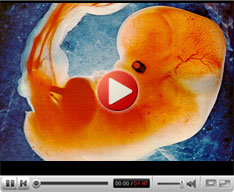
Know Infertitlity
Infertility treatments
Diagnosing InfertilityMale:
Obstetrics and Gynaecology
Infertility Treatment Services
Andrology |
Sperm ProcessingA semen sample typically contains a mixture of functional and non-functional spermatozoa. Selection of high quality, functional sperms is necessary to carry out fertilization techniques such as intrauterine insemination (IUI).The semen sample needs to be prepared in such a way that spermatozoa of the highest quality is obtainedthat is crucial for a successful fertilization and resulting good quality embryos. Sperm processing or sperm washing is a name given to the process in which the sperm cells are separated from the seminal fluid by gentle centrifugation to be used in infertility treatments such as such as intrauterine insemination (IUI) and in-vitro fertilization (IVF). In such cases, semen is not directly injected into the uterus as it contains chemicals that can lead toinfection and painful contractions. Sperm Processing TechniqueThe primary aim of sperm processing is to separate healthy and motile sperm from non-motile ones. Centrifugation is carried out to wash the sperms. This washing is performed many times before the chosen sperms are eventually suspended in nutrient media solution. This procedure takes about 45-90 minutes depending upon the viscosity of the semen sample. A popular laboratory technique known as the swim-up method is a layering process and involves a much longer preparation time. Here, the semen sample is allowed to sit in an incubator for about three hours during the washing phase. This allows for the selection of only highly motile sperms for the insemination. A more advanced and reliable technique of separating healthy, motile sperm from unhealthy ones is referred to as Density Gradient Separation. This procedure provides the best results and recovery of motile sperm and is often recommended for poor quality sperm samples. It makes use of a dense liquid solution wherein the debris and lighter immotile sperm sink to the bottom of the test tube while the healthier ones remain at the top. After centrifugation of the sample many times, the collected sperm cells can be used for IUI. 
How is IUI carried out?In intrauterine insemination (IUI), motile, healthy sperms are directly injected into a woman's uterus to facilitate its union with the egg. This procedure is carried out in a sterile environment with the patient in stirrups. Several techniques are implemented to place the sperm inside the uterus. The most common method makes use of a Makler device, which holds the egg in place while the washed sperm is injected in the uterus. This device is then removed within 10 to 15 minutes. Another method involves the using a catheter which is placed within the uterine cavity while the washed sperm is injected gently. In both the cases, the woman is kept in a pelvic position for 10 to 15 minutes following the placement of the sperm in the uterus. They may experience mild cramping during the process. While they can return to their daily activities the very same day, they should remember that there might be possibility of infection following IUI. You should consult your doctor in case of symptoms like chills, fever, abdominal pain etc. Advantages of Sperm ProcessingThe process of sperm washing has many benefits:
|
Our TeamNews & EventsClinic LocationVideo Gallery |















